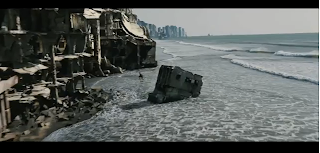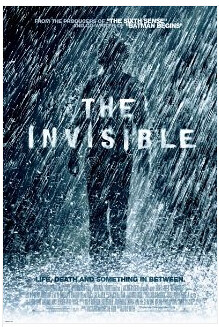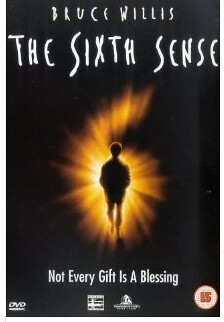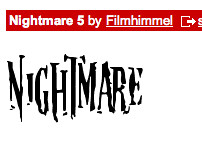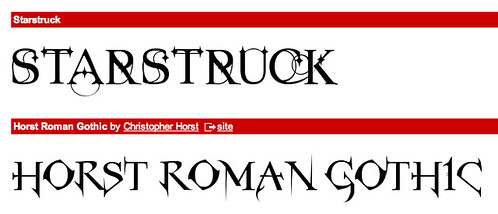Rather than analysing an opening sequence, which I could not find, I analysed a trailer for "Inception" as this had more characteristics of an opening sequence than many "first scenes" I watched.
Here is the trailer:
Sound
Throughout this trailer there is a constant non-diagetic soundtrack, which gradually increases in intensity and only pauses briefly for moments of silence to emphasise key lines, often humorous.
The use of dialogue varies between diagetic conversations and non-diagetic voiceovers; both are used to explain key aspects of the narrative to the audience without giving too much away. They also introduce you to the voices of the main characters.
The music is mainly strings and drums based, giving a sense of tension and increasing urgency as it progresses. The constant tremolo of the violin helps to evoke a sense of nervousness amongst the viewer.
It starts off relatively quiet, yet with a constant crescendo throughout; not only this but more layers are added - such as synths – giving a busier/ more hectic texture.
The timing of the soundtrack is done very cleverly. For example every time a title is introduced, it is coupled with a resonant boom of a drum; this helps to imply a sense of danger, almost as a warning.
Also there are diagetic sound effects used appropriately such as gun shots, explosions and collapsing buildings, which add to the narrative and reinforce the genre. However they also challenge some thriller conventions, as it could begin to look like an action/ adventure film, yet when put with the narrative are unmistakably a thriller.
Mise-en-scene
All titles within this trailer are grey with a heavy stone/ metallic look, appearing in a blank black frame:
This begins to introduce the overall mise-en-scene of the film; cold, dangerous and tense.
This is then reinforced by the props we see and the way they are used: cars in chases, many guns, gadgets, briefcases being locked, papers and files and private jets.
All are used to imply a business like organisation, with a twist; also highlighting the illegalities and therefore the threatening side to this “work force”.
The costume is in keeping with the business atmosphere as we can also see in the final image above. Most people are in suits and for those who are not, it is done intentionally to show that they are not part of the organised crime. For example the first female we see, casually dressed, is blissfully unaware of what she is about to be introduced to:
There is a huge variation in lighting. From the natural outside lighting;
– to the very dim artificial lighting;
Both different styles help to play with the idea of reality and perception, having both elements of the naturalistic and the imposed dream world. To go with this, there is also a variety in the colour design. However mostly blacks, greys and neutral colours are used for the representation of the business world;
The body language of most characters, especially Leonardo Dicaprio's role, have very strong yet professional and closed off body language; again showing the formality of their “business”.
Here we can also see he is regarding this other character with suspicion and the slight hint of his hand, almost up as a physical barrier.
We also see lots of threatening and hostile body language:
– clearly giving him a position of authority and a suggestion of a troubled nature.
The many different locations within this trailer are again used to play with the idea of reality and perception. They mainly suggest an affluent area within a city, implying wealth and businesses – a cover for organised crime. However often in these ordinary locations, there is an extraordinary element, usually unnatural, causing the audience to feel disorientated.
Here we can see the side of the city is beginning to fold in on itself as characters observe and do not seem too phased, whilst this is disorientating for the audience. |
| In these two images, we are shown an everyday city, used to cover this organised crime /\ and \/ |
Now in these two images we begin to see more of the crime side, with very unusual goings on.
Despite this main setting, there are also two completely locations. Firstly the mysterious beach, which we are never really introduced to.
Secondly the snow covered location. Isolated and clearly very important, it hosts a key fight scene. The fact that it is desolate, reinforces the hostile nature of the crime they commit and its threatening purpose.
Camerawork
This trailer uses a range of camerawork to introduce both characters and the narrative.
Lots of canted angles are used to distort the audience's perception:
Many close ups to give reaction shots, show intimacy or highlight a significant prop:
Long establishing shots, show us each new location:
Both low and high angles are used also. This is done for a similar effect as point of view shots:
Here there is a barrier between the camera and the shot itself, creating a barrier between the audience and the action:
Also at times we get hints at handheld camerawork, but only very subtly. This helps to keep the audience at the heart of the action when the director wants them to be.
Framing has been done cleverly, so that in most shots, it is clear which character is in a position of authority:
Here we can just see that the guy in shot is physically lower down than Leonardo Dicaprio, and so lower in the hierarchy, probably answering to Leonardo's character.
As well as the shots themselves, the camera movement plays a massive part in creating an atmosphere. There are many fast paced zooms, pans and tracking shots – again keeping us at the centre of the action and allowing us to begin to relate to characters as we follow them.
Editing
As this is a trailer as opposed to an opening sequence, the editing is slightly more complex.
It is not in a continuity style because it cuts between different key parts of the film in order to introduce the narrative. It could be referred as similar to montage editing, as the audience only gets little snippets of information at a time, yet it is not quite as disorientating as a montage sequence.
The cuts themselves are very fast paced, in keeping with the rushed urgency of the genre.
Also the occasional use of fade to and from black helps to introduced a new location or piece of action. However it is mainly cuts which are used.
This trailer has been edited to allow moments of contrasting humor. For example interrupting a low key scene or certain line, with shots of high intensity action, to then go back to end the line/ scene often adds a sense of dramatic irony, making it comic.
Also, dramatic pauses – which often made room for titles – had this same effect.
The soundtrack and titles in particular have been edited very specifically, with effective timing to help build tension.
Also the music mirrors the intensity of what we are seeing. Lots of action is accompanied by lots of loud overpowering music; whereas individual comic lines, are accompanied by silence for emphasis. Afterwards it then builds immediately back up to remind the audience of the genre.
This editing has been done cleverly so as to inform the audience of what they are letting themselves in for, without spoiling the plot.

















